STUDENTS PROJECTS
2009
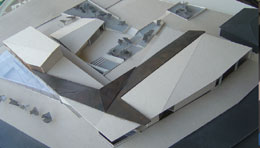
28 December, 2008
Tracks & Memories in Acharnes
We have tried to approach the function of the ancient “alley” as a place of public discussion about art and philosophy. (design project) 
Students: Natasa Markopoulou, Petroula Sepeta, Joanna Chamilou
National Technical University of Greece, February 2007
Supervisors: Mileni Panagiotopoulou, Dimitris Isaias & Sanias Kirpotin
The city of Acharnes, is a place facing a rising demographic growth and at the same time is lacking in culture infrastructures. Moreover, its old history -which is general unknown to the public- empowered the need of designing a multi-dimensional and multi-functional cultural center in order to promote the cultural identity of this municipality and gather its multicultural associations. This building is designed to be a place of culture and art development, a place of humanism. So the main aim of the project is the creation of a modern "stoa" with the initial approach of this term.
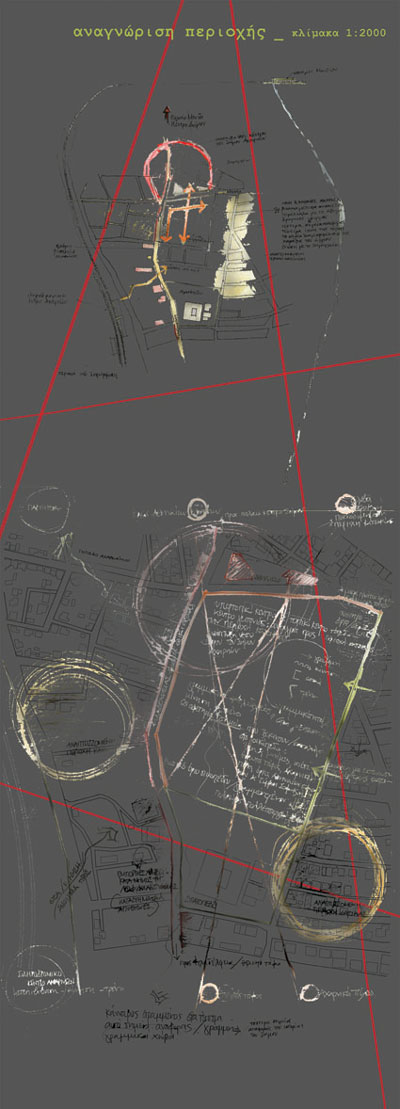
site analysis
In ancient times, "stoa" was a place where the citizens met and developed their social behaviour and their discussion led to the substance of speech, of "logos", the philosophy.
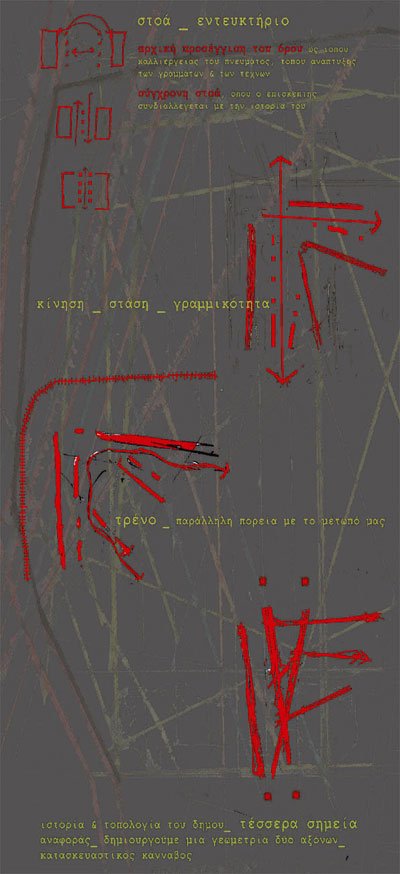
synthetic main ideas
The plot of the project is a former military camp which is located close to the new city hall, the railway city station and the new main city axis/road and is next to the most commercial road of Acharnes which connects the old city centre with the new one.
Developing the basic idea, we located four historic reference points in order to create the tracks which constitute the basic initial tracing (drawing of lines) of the design of the building bulk and of the outdoor space: Parnitha -the location where the Athenians Infantry Soldiers' oath was found, Sophocles' grave, Lykotrypa where a vaulted tomb is located and the "Acharnikes Gates" in the crossroads of Aiolou and Sophocleous Streets.
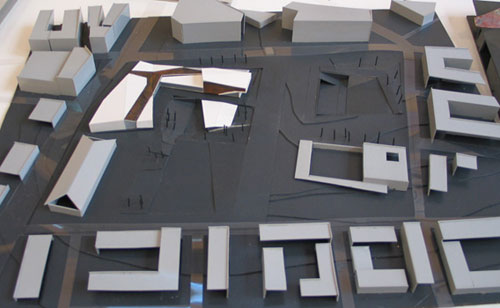
building model /scale.1:500
We have borrowed the main idea of the ancient stoa as a meeting place, a library, and a place of discussions and exchange of views. We have also decided to move within these boundaries, while at the same time we are based on an axis rule deriving from the four reference points so as to finally create a center which will be able to satisfy the corresponding needs in our days.
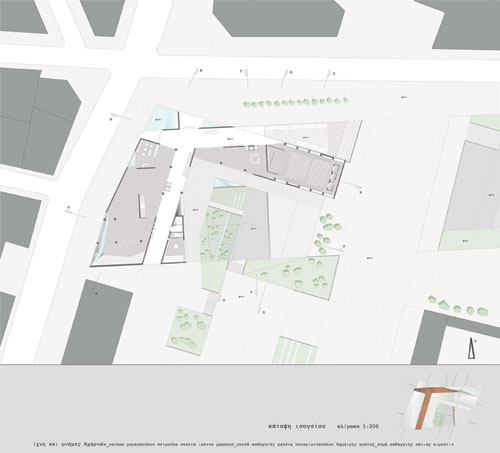
floor plan
Among the center's usages are the exhibition of the municipality's archaeological findings, the promotion of city's historical past, targeting at the mount of cultural events and exhibitions, the organization of educational and training programs, the activation of local associations and finally aiming at briefing and informing citizens on subjects of varied interest.
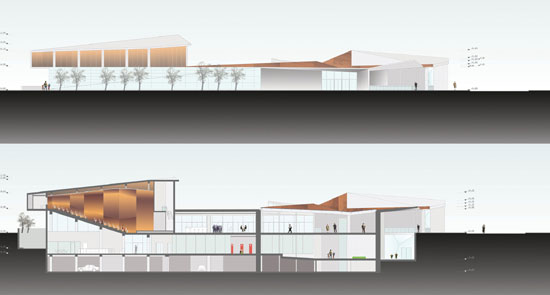
north facade-section
In addition, the design also borrows the architectural rationale of "stoa". Consequently, the building develops by a course that runs through the whole volume and leads to different internal spaces - functions. There are many alternative entrance points in order to make the visitors feel the freedom of the "stoa".

buildings models/ scale. 1:200
In essence, our aim was to combine the awakening of memory and the stimulus of nowadays creating a recognizable and open building to citizens and by extension to visitors, where they will be able to talk with their history.

section model scale. 1:100

interior sketches and 3d plans










